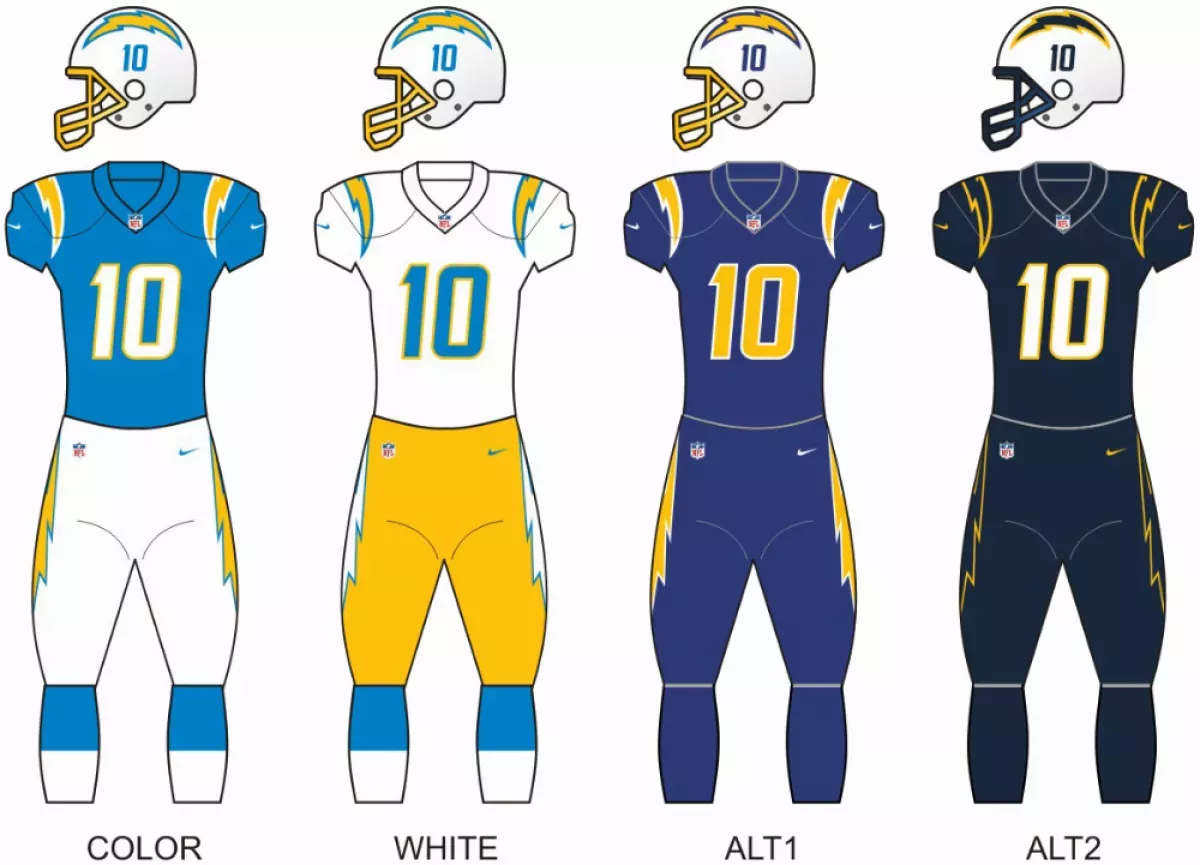The Los Angeles Chargers are a professional American football team competing in the NFL's AFC West division. Based in the Greater Los Angeles area, they share SoFi Stadium in Inglewood, California, with the Los Angeles Rams. The Chargers are a prominent franchise in the NFL, contributing to the league's competitive landscape and fan base in Southern California.
1959: AFL Establishment
In 1959, the Chargers were established with seven other American Football League teams.
1959: Chargers Founded in Los Angeles
In 1959, the Los Angeles Chargers were founded as a charter member of the American Football League (AFL).
1960: Chargers' Original Colors and Uniforms
From 1960, the Chargers' colors included electric blue or white jerseys with gold lightning bolts on the shoulders. The helmets were white with the arc-shaped lightning bolt logo, and the team initially wore white pants.
1960: Chargers Debut with Lightning Bolt Logo
In 1960, the Chargers debuted with a logo featuring an arc-shaped lightning bolt, which has been used essentially since the team's debut.
1960: Chargers Inaugural Season in Los Angeles
The Chargers wore its powder blue jerseys during their inaugural season in 1960 while in Los Angeles.
January 1961: Move to San Diego
In January 1961, the Chargers relocated to San Diego's Balboa Stadium due to financial losses in Los Angeles.
1961: Relocation to San Diego
In 1961, the Chargers relocated to San Diego from Los Angeles, becoming the San Diego Chargers.
1963: AFL Championship Victory
In 1963, the Chargers won the AFL championship.
1963: Chargers Throwback Uniforms
In 2009, the Chargers wore their 1963 throwback uniforms for three games.
1963: Start of Chargers-Raiders Rivalry
The Chargers–Raiders rivalry dates to the 1963 season, when the Raiders defeated the heavily favored Chargers twice.
1964: AFL Championship Loss
In 1964, the Chargers lost in the AFL Championship to the Buffalo Bills.
1965: AFL Championship Loss
In 1965, the Chargers lost in the AFL Championship to the Buffalo Bills.
1966: Ownership Change
In 1966, Hilton sold the Chargers to a group of executives including Eugene V. Klein and Sam Schulman.
1966: Switch to Gold Pants
In 1966, the Chargers switched from white pants to gold pants.
1967: First AFL-NFL Interleague Preseason Games
In 1967, the Chargers and Rams began an extensive history of playing each other in the preseason, going back to the first AFL-NFL interleague preseason games.
1967: Move to San Diego Stadium
In 1967, the Chargers moved to San Diego Stadium.
1970: NFL Merger
In 1970, the Chargers joined the NFL following the AFL-NFL merger.
1970: Lance Alworth Enshrined in Pro Football Hall of Fame
In 1970, wide receiver Lance Alworth (1962-1970) was inducted into the Pro Football Hall of Fame.
1973: Struggling Season
In 1973, the Chargers finished with a 2–11–1 record.
1973: Numeral Change on Blue Jerseys
In 1973, the numerals on the Chargers' blue jerseys changed from white to gold.
1974: Color and Helmet Changes
In 1974, the Chargers changed the sky blue to dark royal blue, changed the helmet to dark blue, and removed the players' numbers. The face masks also became yellow.
1975: No Preseason Game
In 1975, the Chargers and Rams did not play in the preseason.
1976: No Preseason Game
In 1976, the Chargers and Rams did not play in the preseason.
1978: Chargers Wear White Jerseys at Home
From 1978, the Chargers began wearing their white jerseys at home, coinciding with the hiring of coach Don Coryell.
1978: Hiring of Don Coryell
In 1978, Don Coryell was hired as head coach, introducing the "Air Coryell" offense.
1978: "Holy Roller" Game
In 1978, the "Holy Roller" game occurred between the Chargers and Raiders, resulting in a rule change the following season.
1979: Joe Gibbs as Coryell Assistant
In 1979, Joe Gibbs was an assistant to Don Coryell.
1979: Playoff Appearance
In 1979, the Chargers made a playoff appearance.
1980: Raiders win AFC Championship
In 1980, The Raiders won the only playoff game between the two teams, the AFC Championship game.
1981: Joe Gibbs as Redskins Head Coach
In 1981, Joe Gibbs became head coach of the Washington Redskins.
November 22, 1982: Raiders' First Monday Night Football Game in Los Angeles
On November 22, 1982, the Raiders hosted their first Monday Night football game in Los Angeles against the Chargers, with the Raiders overcoming a 24-0 deficit to win 28-24.
1982: Raiders' Tenure in Los Angeles Begins
In 1982, The Los Angeles Raiders and Rams were considered to be competing in the "Battle of Los Angeles" during the Raiders' tenure in Los Angeles.
1982: Playoff Appearance
In 1982, the Chargers made a playoff appearance.
1983: Passing Yard Leaders
In 1983, the Chargers led the league in passing yards.
1983: End of White Jerseys at Home
In 1983, the Chargers' trend of wearing white jerseys at home ended.
1984: Clippers Move to Los Angeles
In 1984, the Clippers moved to Los Angeles, making the Chargers the second former San Diego professional sports franchise to move to Los Angeles.
1984: Return to Blue Jerseys at Home
Starting in 1984, coach Don Coryell switched the Chargers back to wearing their blue jerseys at home.
1985: No Preseason Game
In 1985, the Chargers and Rams did not play in the preseason.
1985: Passing Yard Leaders
In 1985, the Chargers led the league in passing yards.
1985: Introduction of Navy Blue Jerseys
In 1985, the Chargers started using navy blue jerseys and returned to wearing white pants.
1988: Uniform Design Revamp
In 1988, the Chargers revamped their uniform design, featuring a darker shade of navy blue, white lightning bolts with navy interior trim and gold outlining, and navy blue facemasks.
1988: Last Uniform Redesign
The Chargers unveiled their first uniform redesign in March 2007, since 1988.
1989: No Preseason Game
In 1989, the Chargers and Rams did not play in the preseason.
1990: Introduction of Navy Pants
In 1990, the Chargers started to wear navy pants with their white jerseys.
1991: Striped Pants Design
From 1988 to 1991, the Chargers displayed stripes down the pants rather than lightning bolts.
1991: Sporadic White Jersey Home Games
In the 1991 season, the Chargers wore white jerseys at home for some games.
1992: Hiring of Bobby Ross
In 1992, Bobby Ross was hired as head coach and the Chargers won the AFC West title.
1992: Chargers Won AFC Wild Card Game
In 1992, the Chargers won the only playoff meeting between the two teams, a 1992 AFC wild card game.
1994: Raiders Leave Los Angeles
In 1994, The Los Angeles Raiders and Rams rivalry ended as the Rams moved to St. Louis and the Raiders returned to Oakland.
1994: Throwback Uniform Program
In 1994, as part of the NFL's 75th season throwback uniform program, the Chargers wore uniforms based on their early 1960s look four times.
1994: Super Bowl Appearance
In 1994, the Chargers reached the Super Bowl for the first time, losing to the San Francisco 49ers 49–26.
1994: AFC Championship Victory
In 1994, the Chargers won their first AFC championship, earning a Super Bowl berth.
1997: All-White Combination
In 1997, the Chargers went with all-white uniform combinations.
2000: Chargers Uniform Preference
From the late 1980s to 2000, the Chargers wore white at home during some preseason games and dark for regular season games.
2000: Powder Blue Throwbacks Return
In 2000, the powder blue throwbacks were brought back for a Week 9 matchup against the Raiders.
2001: Return of Blue Pants
In 2001, after another stint with all-white uniforms, the blue pants made a comeback for the Chargers.
2001: Uniform Change Based on Weather
In 2001, the Chargers started wearing their dark uniforms for preseason games and white uniforms in September home games due to the heat before switching back to dark in October.
2002: Powder Blue Throwbacks Become Regular Alternate
From 2002, the powder blue throwbacks became a regular alternate uniform worn once or twice a season through 2006.
2002: Marty Schottenheimer Named Head Coach
In 2002, Marty Schottenheimer was named the Chargers' head coach, leading the team to an 8–8 record in his first season.
October 27, 2003: All-Dark Combination Game
On October 27, 2003, the Chargers wore their navy pants with their navy jersey for a Monday Night Football game versus the Miami Dolphins at Sun Devil Stadium due to wildfires.
2003: 4-12 Season
In the 2003 season, the Chargers had a 4-12 record.
2004: Draft and Trade
In 2004, the Chargers drafted Eli Manning who was then traded to the Giants for Philip Rivers.
2005: Missed Postseason
In the 2005 season, The Chargers went 9-7, but missed the postseason.
December 31, 2005: Philip Rivers' Starting Debut
On December 31, 2005, Philip Rivers made his starting debut for the Chargers.
2006: End of powder blue alternate uniform
In 2006, The powder blue throwbacks were a regular alternate uniform worn once or twice a season, until 2006.
2006: Rivers Takes Over as Starting Quarterback
In the 2006 season, Philip Rivers became the starting quarterback and the Chargers went 14-2, the best record in franchise history, and were eliminated in the Divisional Round.
March 2007: Uniform Redesign Unveiled
In March 2007, the Chargers unveiled their first uniform redesign since 1988, mixing old and new styles, with navy blue as the primary color, a gold lightning bolt with navy and powder blue trim, and a metallic white helmet.
2007: Powder Blue Jerseys Worn Twice per Season
From 2007, the Chargers wore the alternate powder blue jerseys twice per season.
2007: Hiring of Norv Turner
In 2007, Norv Turner was named as head coach, leading the Chargers to an AFC West title and an AFC Championship appearance.
2007: End of Redskins White at Home Trend
In 2007, The Washington Redskins stopped wearing white jerseys at home.
2008: Division Title
In 2008, The Chargers won the division after regressing to an 8-8 record.
2008: Powder Blue Jerseys in Playoff Game
In 2008, the alternate powder blue jerseys were worn in a playoff game against the Indianapolis Colts.
2008: Preseason Series Continues in St. Louis
Through 2008, the preseason series between the Chargers and Rams continued with the Rams in St. Louis, playing nine times out of fourteen seasons.
2009: 50th Anniversary Throwback Uniforms
In 2009, in honor of their 50th anniversary, the Chargers wore their 1963 throwback uniforms for three games.
2009: Division Title
In 2009, the Chargers went 13-3 and won the division.
2010: Chargers' Number Retirement Policy
As of 2010, the Chargers' policy was to have the Chargers Hall of Fame committee evaluate candidates for a player's number to retire after the player has retired from the league after five years.
2010: Missed Postseason
In 2010, The Chargers went 9-7 but missed the postseason.
2011: Missed Postseason
In 2011, the Chargers went 8-8 and missed the postseason.
2012: Firing of Norv Turner
In 2012, after going 7-9 and missing the postseason, the Chargers fired head coach Norv Turner.
2013: Minor Uniform Tweaks
For the 2013 season, the Chargers made minor tweaks to their current uniforms, including a two-tone nameplate, collars matching the color of the jersey, and the addition of a gold stripe on the socks.
2013: Hiring of Mike McCoy
In 2013, Mike McCoy was hired to be the Chargers new head coach, leading the team to the playoffs.
2013: Broncos win AFC Divisional Game
In 2013, The Broncos won the only playoff meeting between the two teams, a 2013 AFC Divisional game.
2014: Missed Postseason
In 2014, The Chargers went 9-7 again but missed the postseason.
2015: Poor Season
In 2015, The Chargers went 4-12.
2015: Raiders' Failed Move Back to Los Angeles
In 2015, the Raiders unsuccessfully attempted to move back to Los Angeles following a failed joint stadium project with the then-San Diego Chargers.
2016: Joey Bosa, NFL Rookie of the Year
In 2016, Joey Bosa was awarded NFL Rookie of the Year (Defensive).
2016: Rams Return to Los Angeles
In 2016, The intercity rivalry was revived only with the Chargers' move from San Diego in 2017, following the Rams' return to Los Angeles.
2016: Parting Ways with Mike McCoy
In 2016, after going 5-11 and missing the postseason, the team parted ways with Mike McCoy as head coach.
January 12, 2017: Announcement of Move to Los Angeles
On January 12, 2017, Chargers owner Dean Spanos announced the team's move to Los Angeles in a letter to the city of San Diego.
2017: Keenan Allen, NFL Comeback Player of the Year
In 2017, Keenan Allen was awarded NFL Comeback Player of the Year.
2017: Preseason Series Resumes in Los Angeles
In 2017, the Chargers and Rams resumed their preseason series when both teams were back in Los Angeles.
2017: Return to Los Angeles
In 2017, the Chargers moved back to Los Angeles after 56 seasons in San Diego.
2017: Chargers Move to Los Angeles, Reviving Rivalry
In 2017, the Chargers' move from San Diego revived the intercity rivalry with the Rams, following the Rams' return to Los Angeles in 2016.
December 2018: Columnist Questions Parade Prospects
In December 2018, a Los Angeles Times columnist questioned whether the Chargers would receive a parade in Los Angeles if they were to win the Super Bowl.
2018: End of powder blue alternate uniform
From 2007 to 2018, the Chargers wore the alternate powder blue jerseys twice per season, until 2018.
2018: Divisional Loss to Patriots
In 2018, The Los Angeles Chargers appeared in the postseason, which resulted in a Divisional loss to the Patriots.
2018: Rams Win First Matchup in Los Angeles
In 2018, the Rams won the first regular season matchup in Los Angeles between the two teams, also earning an appearance in the 2018 AFC divisional round.
2018: Return of the Shield Logo
In the 2018 season, the Chargers brought back the shield logo, which featured a horsehead, a lightning bolt, and the word "Chargers", for on-field design.
April 16, 2019: Powder Blue Jerseys Become Primary Home Uniform
On April 16, 2019, the Chargers announced that they would wear their powder blue jerseys as their primary home uniform, beginning with the 2019 NFL season.
2019: Rivers Enters Free Agency
In the 2019 season, the Chargers had a poor 5–11 record, and Philip Rivers entered free agency, ending his long tenure as the Chargers' starting quarterback.
March 24, 2020: New Logos Announced
On March 24, 2020, the Chargers announced new logos for the team, removing the navy blue completely and altering the double bolt.
April 21, 2020: New Uniforms Unveiled
On April 21, 2020, the Chargers unveiled their new uniforms, with powder blue returning as the primary color.
September 13, 2020: Tyrod Taylor Becomes Starting Quarterback
On September 13, 2020, Tyrod Taylor became the starting quarterback for the Chargers, leading them to a 16-13 win against the Bengals.
September 20, 2020: Justin Herbert's First Start
On September 20, 2020, Justin Herbert started for the Chargers after Tyrod Taylor suffered a punctured lung.
2020: Justin Herbert, NFL Rookie of the Year
In 2020, Justin Herbert was awarded NFL Rookie of the Year (Offensive).
2020: Preseason Game Cancelled
In 2020, the preseason game between the Chargers and Rams, along with all preseason games, was cancelled due to the COVID-19 pandemic.
2020: New Uniform Change
The Chargers did not wear the all-dark combination of uniforms again until the uniform change in 2020.
January 17, 2021: Hiring of Brandon Staley
On January 17, 2021, the Chargers signed Rams defensive coordinator Brandon Staley to become their new head coach.
2021: Preseason Series Resumes Annually
In 2021, the Chargers and Rams would resume the preseason series annually.
2021: Missed Playoffs
In the 2021 season, despite Justin Herbert breaking records, the Chargers missed the playoffs.
January 10, 2022: Raiders Defeat Chargers in Overtime
On January 10, 2022, the Raiders defeated the Chargers in overtime, 35–32, eliminating the Chargers from playoff contention.
February 3, 2022: Hiring of Ryan Ficken
On February 3, 2022, the Chargers hired Vikings special teams coordinator Ryan Ficken.
2022: Chargers Win at New Stadium
In 2022, the Chargers would win the next meeting in Week 17, the first matchup between the two teams at their new stadium.
January 17, 2023: Firing of Joe Lombardi and Shane Day
On January 17, 2023, the Chargers fired offensive coordinator Joe Lombardi and quarterbacks coach Shane Day.
December 15, 2023: Firing of Brandon Staley and Tom Telesco
On December 15, 2023, head coach Brandon Staley and general manager Tom Telesco were fired after a 63-21 loss to the Raiders.
2023: Rams Lead All-Time Series
As of the 2023 season, the Rams lead the all-time series against the Chargers 7–6.
January 24, 2024: Signing of Jim Harbaugh
On January 24, 2024, the Chargers signed former Michigan football coach Jim Harbaugh.
August 2024: Team Value Ranking
In August 2024, Forbes listed the Los Angeles Chargers with a value of 5.1 billion dollars, ranking them 20th among NFL teams.
2024: Chiefs Lead Series
As of the 2024 season, the Kansas City Chiefs lead the series against the Chargers 70–58–1.
2024: Royal Alternates Shelved
For the 2024 season, the Chargers shelved the royal alternates, wearing the navy set just once.
2024: Chargers Improved Record and Playoff Loss
In 2024, the Chargers finished with an improved 11-6 record, securing the 5th seed in the AFC. However, they lost to the Houston Texans in the Wild Card round of the 2024-25 NFL playoffs.
Mentioned in this timeline
The Kansas City Chiefs are a professional American football team...
California is a U S state on the Pacific Coast...
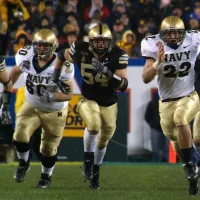
College football is a popular amateur sport in the United...

SoFi Stadium located in Inglewood California is a multi-purpose indoor...
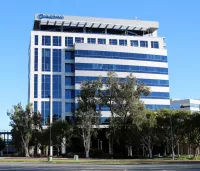
Qualcomm is a multinational corporation specializing in semiconductors software and...
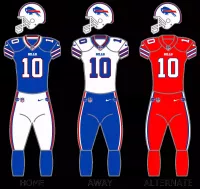
The Buffalo Bills are an NFL team representing the Buffalo...
Trending
2 months ago McDonald's Employee Shoots Customer After Argument Over Delayed Order in Florida.
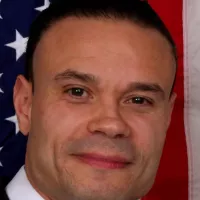
13 days ago Report reveals FBI's internal paralysis; Patel and Bongino defend their tenures.
Nicolai Budkov Kj r is a Norwegian professional tennis player His highest ATP singles ranking is world No which he...
Mike Elko is an American college football coach currently serving as the head coach at Texas A M University a...

7 months ago Yankees' Luke Weaver Likely to Injured List Due to Hamstring Issue
7 months ago Cade Horton promoted to Chicago Cubs; Mets prepare for Horton debut.
Popular

Candace Owens is an American conservative political commentator and author...

Ilhan Omar is an American politician currently serving as the...

XXXTentacion born Jahseh Dwayne Ricardo Onfroy was a controversial yet...

Charles James Charlie Kirk was a prominent American right-wing political...
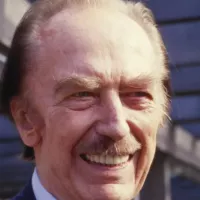
Frederick Christ Trump Sr - was an American real estate...

Bill Gates an American businessman and philanthropist revolutionized personal computing...
